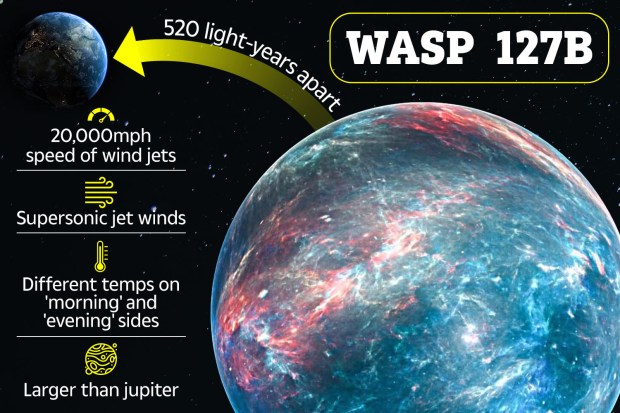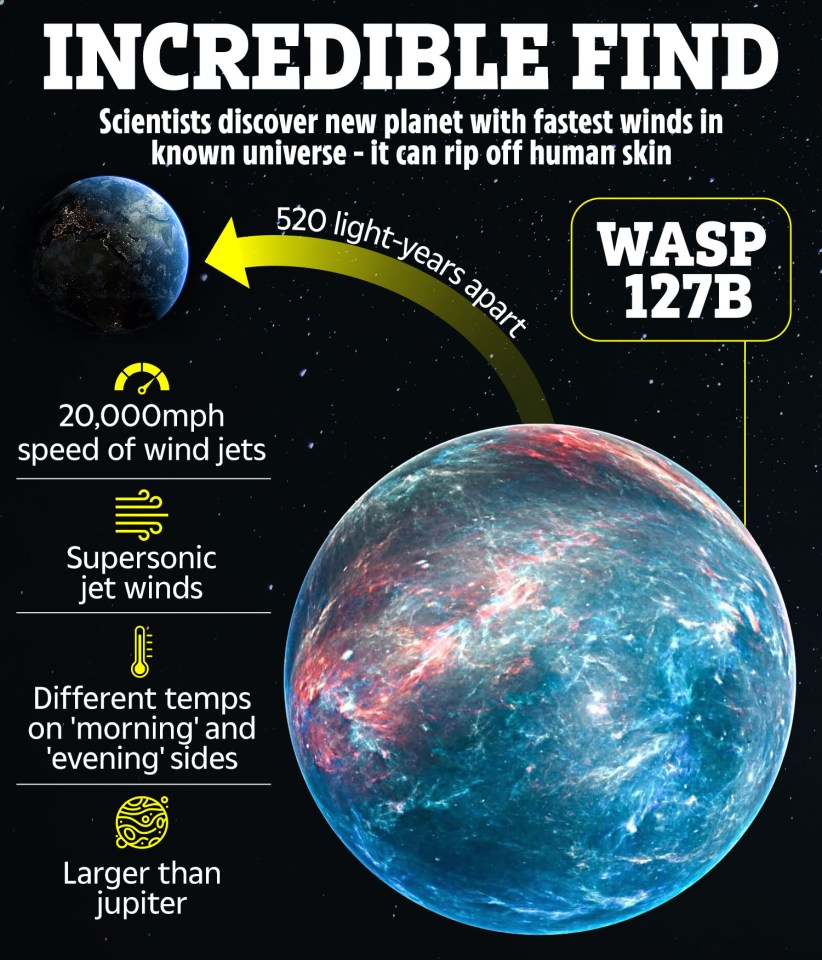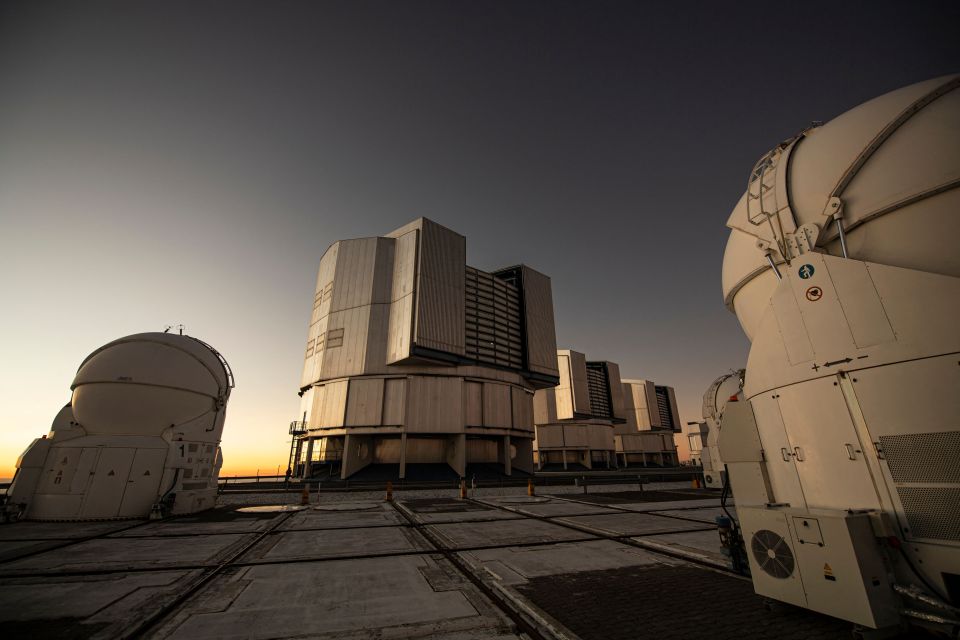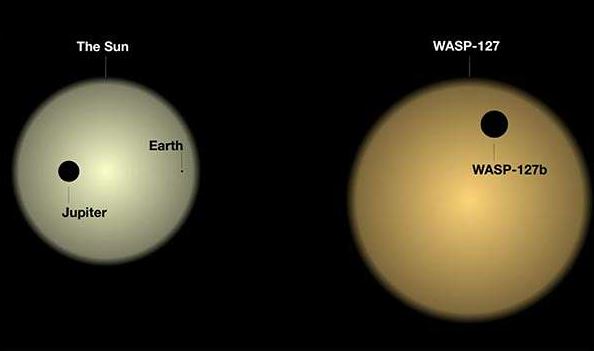Fastest wind in known universe that can rip off human skin & blows 6x faster than the planet it’s on spins is discovered

A PLANET nestled more than 500 light-years away from Earth is home to the fastest known winds.
Barrelling through space at 20,000mph, the "supersonic" gales would be fierce enough to rip a person's flesh right off their bones.
They blow six times faster than the planet itself - a gas giant called WASP-127b - can even spin.
A scientist from the team that discovered it said a "very fast, supersonic jet wind" is gushing around the planet's equator.
The fastest ever winds discovered in our own Solar System occur on Neptune - only reaching as much as 1,200mph.
Incredibly, scientists used an enormous telescope to analyse how starlight passed through the planet in order to map it out.
READ MORE ON TECH
Human skin, thought to have a tensile strength of about 20 MPa, would likely tear if it came up against winds that travel at more than 16,600mph.
Given the gusts on WASP sit comfortably higher than this incredible rate, it follows that the gas giant's gales would be strong enough to rip a human being's skin right off.
Unlike anything astronomers have ever seen, WASP is larger than Jupiter.
But it carries less mass, described as incredibly "puffy".
Most read in Science
Scientists discovered that WASP has different temperatures on its morning and evening sides.
They also found water vapour and carbon monoxide on its atmosphere.
The amazing find was made using the European Southern Observatory’s Very Large Telescope (ESO’s VLT) in Chile, which is designed to provide weather insights on distant worlds.
Fei Yan, co-author of the study and professor at the University of Science and Technology of China, said: "This shows that the planet has complex weather patterns just like Earth and other planets of our own System."
Lisa Nortmann, lead scientist on the paper from the University of Göttingen, Germany, said: "This is something we haven't seen before".
"Part of the atmosphere of this planet is moving towards us at a high velocity while another part is moving away from us at the same speed.
"This signal shows us that there is a very fast, supersonic, jet wind around the planet’s equator."
David Cont, co-author from the Ludwig Maximilian University of Munich, Germany, said: "Understanding the dynamics of these exoplanets helps us explore mechanisms such as heat redistribution and chemical processes, improving our understanding of planet formation and potentially shedding light on the origins of our own Solar System."













